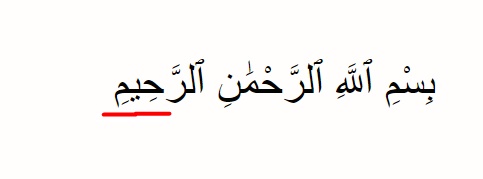Kapanlagi.com - Understanding the rules of recitation of tajweed in the Quran is necessary to perfect the recitation of the holy verses of the Quran. There are various types of recitation rules in the Quran that need to be known along with their explanations and examples. By understanding the different types of recitation rules in tajweed, the recitation of the Quran will become better and more perfect.
In Islam, the Quran is a sacred book that is important to practice. One of the practices is to recite the holy verses of the Quran, which consist of 114 surahs, 30 juz, and 6666 verses. Reciting the Quran is an act of worship that cannot be neglected, just like other main acts of worship such as prayer, fasting, and charity.
As a recommended act of worship, reciting the Quran can bring rewards to the reader or even to those who listen. When reciting the Quran, there are specific methods and rules that every Muslim should understand. One of these rules is to understand the different types of recitation rules in tajweed in the Quran.
These recitation rules in tajweed in the Quran serve to determine the length of a recitation, which is indicated by the presence of the letters alif, wawu, and ya'. Usually, these elongated letters are found in certain verses of the Quran, which are divided into several different types of recitation rules in tajweed in the Quran.
So, what are the various types of recitation rules in tajweed in the Quran?
The complete types of recitation rules in tajweed in the Quran, along with their explanations and examples, are listed in the following points. The following are various types of mad recitation of Tajweed Al Quran that have been compiled from various sources.
1. Mad Thabi'i

(credit: tafsirweb.com)
The first type of mad recitation of Tajweed Al Quran is called mad thabi'i. Mad thabi'i can also be called original mad. In other words, mad thabi'i is a recitation of mad that occurs when there is an alif letter after fathah or a ya' sukun letter after kasrah, or a wawu letter after dhammah. When there is a recitation with these mad letters, it is judged as mad thabi'i, which means long and normal recitation. The length of mad thabi'i is one alif or two beats.
An example of this mad thabi'i recitation is as shown in the image above, where there is a ya' letter after kasrah. Therefore, the recitation falls into mad thabi'i, which is recited with one or two long beats.
2. Mad Far'i

(credit: freepik.com)
Various types of recitation rules in the Tajweed of the Quran are called Mad Far'i. Mad Far'i means branch in Bahasa, while in terms of Tajweed, it refers to a Mad that is an addition to the original Mad with a hamzah or sukun after the Mad letter. There are various types of Mad Tajweed recitation in this Mad Far'i category, which are divided into several categories based on sukun and hamzah. In the sukun category, Mad Far'i has several types such as Mad Aridh and Mad Ashli.
On the other hand, in the hamzah category, Mad Far'i has several types such as Muttashil, Munfashil, and Badal. Among these Mad Far'i, in the next point, you can understand them based on various types of Mad Tajweed recitation in the Quran.
3. Mad Wajib Muttashil

(credit: liputan6.com/)
The next types of recitation rules in the Tajweed of the Quran, which are part of the Mad Far'i group, are called Mad Wajib Muttashil. This type of Mad occurs when the Mad letter and hamzah are in the same word. It means the Mad meets with hamzah in one word of the Quran verse. Mad Wajib Muttashil is recited with a length of more than two harakat, ranging from 4-5 harakat when there is washal and waqaf. It is recited with 6 harakat if there is a Mad Wajib Muttashil at the end of a word and is recited as waqaf. An example is shown in the image above, which indicates the occurrence of Mad Thabi'i added with hamzah.
4. Mad Jaiz Munfashil

(credit: hahuwa.blogspot.com)
Various types of tajweed recitation in the Quran are known as mad jaiz munfashil. This mad occurs when mad thabi'i meets with hamzah but is located in two words within an ayah of the Quran. So mad jaiz munfashil can also be interpreted as mad which means permissible and munfashil separated. The length of this mad recitation is usually more than two harakat. As for an example of the recitation, it is shown in the image that demonstrates mad jaiz munfashil.
5. Mad Lazim Mutsaqqal Kilmi

(credit: liputan6.com/)
Another type of tajweed recitation in the Quran is known as mad lazim mutsaqqal kilmi. Mad lazim mutsaqqal kilmi can occur when the original mad or mad thabi'i meets with tasydid in one word or one ayah of the Quran. The length of the required continuous mad harakat is six harakat. As for an example of the recitation, it can be understood from the image above that shows the occurrence of mad lazim mutsaqqal kilmi.
6. Mad Lazim Mukhaffaf Kilmi

(credit: liputan6.com/)
Various types of recitation rules in the Quran are called mad lazim mukhaffaf kilmi. Mad lazim mukhaffaf kilmi occurs when mad thabi'i or mad asli meets a dead letter or sukun. Its length is six harakat. An example of recitation of mad lazim mukhaffaf kilmi is shown in the image.
7. Mad Layyin

(credit: liputan6.com/)
Various other tajweed recitation types in the Quran are called mad layyin. Mad layyin can occur after letters with fathah, wawu sukun, or ya' sukun. Mad layyin is read smoothly and without stress. An example of mad layyin recitation is shown in the image that indicates the occurrence of mad layyin.
8. Mad Aridh Lissukun

(credit: liputan6.com/)
Mad airdh lissukun is also included in mad far'i which occurs when there is a sukun letter in the mad recitation because of waqaf. Usually, mad aridh lissukun is read with 6 harakat. However, when it occurs in the middle, it can be read with only four harakat. Or it can be read short like regular mad thabi'i with only two harakat. Examples of mad aridh lissukun can be seen from the image below.
9. Mad Shilah Thawilah

(credit: hahuwa.blogspot.com)
Mad shilah thawilah is a type of recitation in Tajweed Al Quran that is often found in several verses. Mad shilah thawilah can occur when there is a ha' dhamir letter and before ha' there is a vowel or harakah. It should be read long with more than two harakat or 4 to 5 harakat. Examples of mad shilah thawilah can be seen from the image below.
10. Mad 'Iwad

(credit: liputan6.com/)
Various recitations of Tajweed in the Quran are known as Mad 'Iwad. This type of Mad occurs when there is a meeting of two fathahain at the end of a sentence. The length of the recitation is two harakat. An example of Mad 'Iwad can be seen in the above image.
11. Mad Badal

(credit: liputan6.com/)
Mad Badal is one of the various recitations of Tajweed in the Quran that occurs when hamzah meets a Mad. An example of Mad Badal can be understood as shown in the above image. From this example, it can be seen that Mad Badal occurs when hamzah meets a Mad, which is included in the type or kind of Mad Badal.
12. Mad Lazim Harfi Musyabba'

(credit: liputan6.com/)
Mad lazim harfi musyabba' usually appears at the beginning of verses in the Quran in several surahs. Usually, in mad lazim harfi musyabba', there is a letter mad that is idghamkan. As for examples of mad badal, you can understand them as shown in the picture above.
13. Mad Lazim Harfi Mukhaffaf

(credit: liputan6.com/)
Mad lazim harfi mukhaffaf usually also appears at the beginning of verses in the Quran. Where mad consists of three letters and in the middle there is mad. The length of the recitation of mad lazim harfi mukhaffaf is six harakat, as shown in the picture above.
So those are the 13 types of mad recitation in the complete Quran tajweed with explanations and examples. In addition to the several types of mad mentioned above, there are still other types of mad that can be recognized, such as mad tamkien and mad farq.
Source: liputan6.com, hahuwa.blogspot.com, merdeka.com
(kpl/nlw)
Disclaimer: This translation from Bahasa Indonesia to English has been generated by Artificial Intelligence.

























